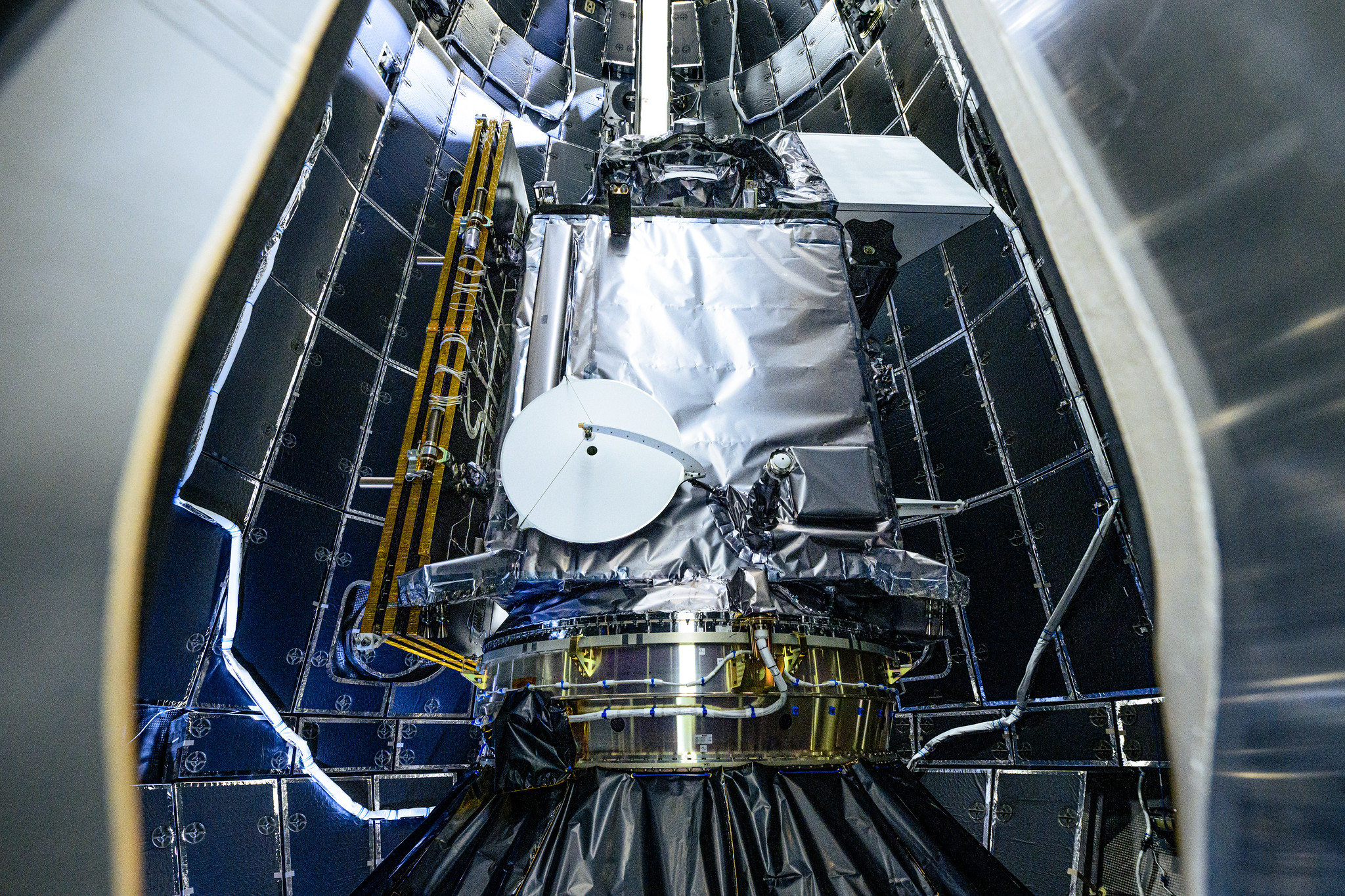WASHINGTON — A nearly billion-dollar mission to study the Earth’s oceans and atmosphere is ready to launch after surviving several cancellation attempts earlier in its development.
A Falcon 9 is scheduled to lift off from Cape Canaveral’s Space Launch Complex 40 Feb. 6 at 1:33 a.m. Eastern. The vehicle will place into sun-synchronous orbit NASA’s Plankton, Aerosol, Cloud, ocean Ecosystem, or PACE, spacecraft.
PACE carries three instruments designed to study the ocean as well as clouds and aerosols in the atmosphere. Ocean Color Instrument (OCI), the primary instrument, will provide information on ocean color from ultraviolet to infrared wavelengths. It is accompanied by the Hyper Angular Research Polarimeter (HARP2) and Spectro-polarimeter for Planetary Exploration (SPEXone), which will provide data on atmospheric clouds and aerosols as well as support atmospheric correction of OCI data.
“PACE is going to so profoundly advance our understanding about how our oceans work and how they are related to the broader Earth system and the changing climate,” said Karen St. Germain, director of NASA’s Earth science division, at a Feb. 4 briefing about the mission.
A key focus of PACE will be studying phytoplankton on the ocean surface. That includes being able to differentiate among phytoplankton species, said Jeremy Werdell, PACE project scientist. “Now we’ll know where the harmful ones are, where the beneficial ones are, where the beneficial ones are moving to.”
Scientists will complement PACE data with that from other Earth science missions, such as the Surface Water and Ocean Topography (SWOT) spacecraft. “SWOT tells us more about how the ocean moves, including the height of the sea. PACE is going to give us information on what’s living in those surface oceans,” said Kate Calvin, NASA’s chief scientist and senior climate adviser.
Data from PACE will also help track different kinds of aerosols in the atmosphere, such as sea spray, smoke and desert dust. That is useful for monitoring air quality and its impacts on human health, interactions between the atmosphere and the ecosystem, and cloud formation. “It’s so dynamic, space is the only way you can possibly do this,” said Andy Sayer, PACE atmospheric scientist.
PACE has a design life of three years, but St. Germain said NASA expects the mission to last longer, with enough consumables such as propellant on the 1,700-kilogram spacecraft to operate for at least a decade. “We’re hoping for a nice long life for PACE.”
Once launched, PACE will go through a commissioning period expected to last 60 days, Werdell said at an earlier briefing Jan. 17, with “first light” data released after about 40 to 50 days. All the data from PACE will be publicly available with no exclusivity period for the mission’s science team.
PACE, with a total cost including reserves of $964 million, became a target for budget cuts earlier in its development by the Trump administration. All four of its NASA budget proposals, for fiscal years 2018 through 2021, sought to cancel PACE. All four times Congress rejected the cut and restored funding to the mission.
“It has been a long, strange trip,” Werdell said at the Feb. 4 briefing when asked about those proposed cancellations. “We were as confident as one could be that we would find ways to persevere. The community wanted all of this.”
“One of the reasons we’re sitting here today is because there were many in our stakeholder community who understood the potential impact of PACE and supported us moving forward,” said St. Germain.
Related
Read the original article here
